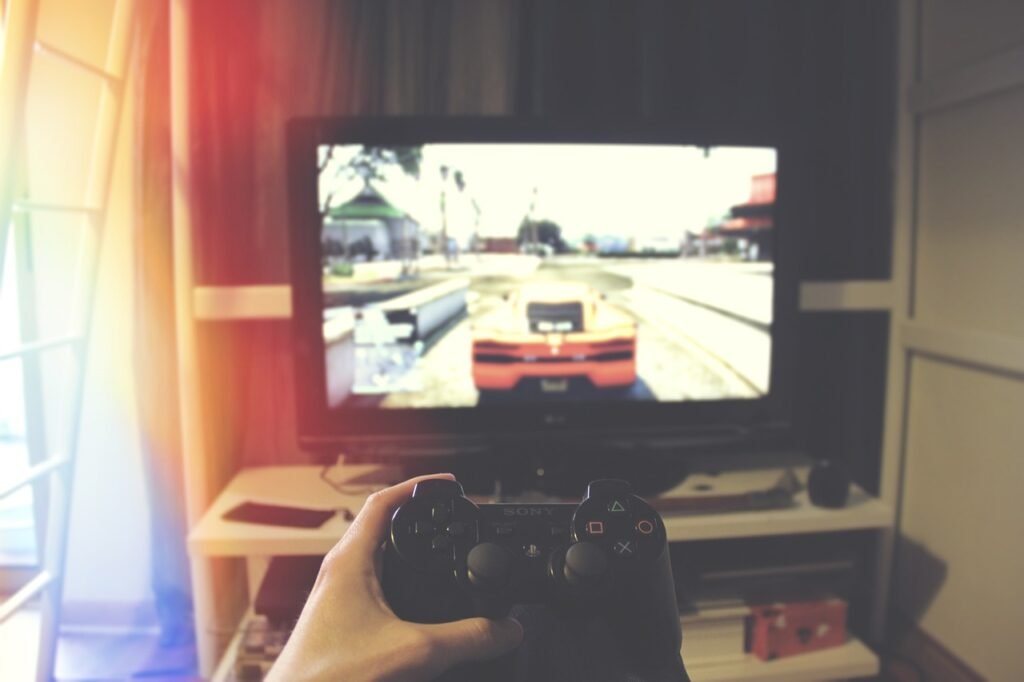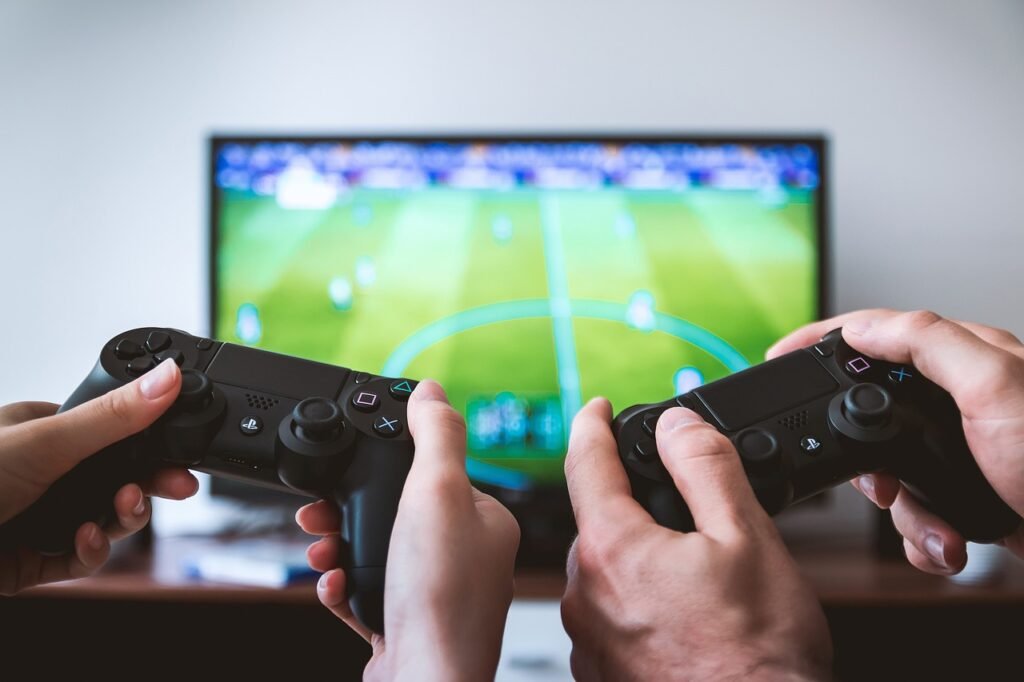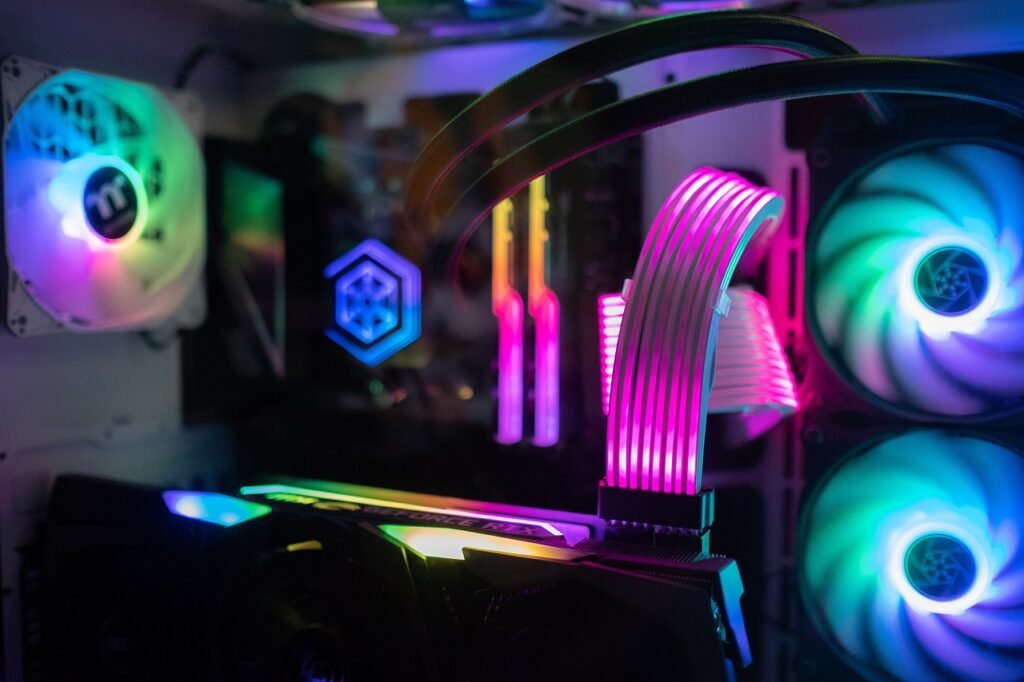As gaming continues to be a favorite pastime for children worldwide, it’s important for parents to stay informed about its impact. Video games are more accessible now than ever before, with a range of platforms from consoles to mobile devices. But what does this mean for kids, and how can parents make sure gaming remains a positive activity? In this comprehensive guide, we’ll explore the many facets of gaming and kids, from the benefits to the potential pitfalls and how parents can create a healthy balance.
Understanding the Relationship Between Gaming and Kids
The Rising Popularity of Video Games Among Kids
In today’s world, it’s rare to find a child who hasn’t played a video game. Studies show that around 90% of kids aged 6-17 play video games regularly. The explosion of mobile devices and affordable gaming consoles has made gaming more accessible than ever before.
The Age Kids Start Gaming
Kids are starting to game at increasingly younger ages. Many children begin playing simple, colorful games as early as two or three, moving to more complex platforms by the time they reach school age. This early exposure is something parents should be aware of and manage.
Why Video Games Appeal to Kids
From vibrant graphics to immersive stories, video games offer a level of interaction that other forms of entertainment simply can’t match. For kids, gaming presents a fun way to challenge themselves, connect with friends, and explore new worlds from the comfort of their own homes.Insert Image Here: A photo of a young child playing a video game on a tablet would work well to visualize this point.
The Positive Impact of Gaming on Kids
Educational Benefits of Video Games
Believe it or not, some video games can be highly educational. Many titles focus on subjects like math, science, and history, making learning feel like fun. Games that require critical thinking, puzzle-solving, and strategy can stimulate cognitive development.
Development of Problem-Solving Skills
Video games often present players with puzzles or challenges that require creative solutions. This constant problem-solving helps kids develop analytical thinking and reasoning skills that can be applied to real-world scenarios.
Enhanced Hand-Eye Coordination
Studies suggest that kids who play video games tend to have better hand-eye coordination than their peers who don’t. The need to react quickly and accurately to on-screen movements trains reflexes and improves motor skills.
The Negative Impact of Gaming on Kids
The Risk of Gaming Addiction
While gaming can be enjoyable, excessive gaming can lead to addiction. Kids might become so engrossed in their virtual worlds that they neglect real-life responsibilities such as homework or social interactions. Recognizing the signs of gaming addiction is crucial for parents.
Potential Effects on Social Skills
Kids who spend excessive time gaming, especially on single-player titles, may struggle with face-to-face interactions. While online multiplayer games offer social engagement, they lack the depth of real-life communication, which can affect a child’s ability to build strong interpersonal skills.
Exposure to Inappropriate Content
Not all video games are designed for children. Without proper supervision, kids may access games that contain violent or inappropriate content. It’s important for parents to be aware of what their children are playing and ensure the games are age-appropriate.

Balancing Gaming and Screen Time for Kids
Recommended Screen Time Limits
The American Academy of Pediatrics recommends that children aged 6 and older should have no more than two hours of recreational screen time per day. For younger kids, the limit is even lower. Sticking to these guidelines can help maintain a healthy balance between gaming and other activities.
Setting Boundaries and Monitoring Playtime
Parents should set clear rules about when and how long their kids can play. This might involve limiting gaming to weekends, or ensuring that homework and chores are completed before turning on the console. Setting up a schedule can help kids prioritize their responsibilities.
The Role of Parental Controls
Most gaming consoles and mobile devices offer parental control options that allow parents to monitor game content, set time limits, and restrict in-game purchases. These tools are invaluable for ensuring that kids enjoy gaming in a safe and balanced way.
Popular Types of Video Games for Kids
Educational Vedio Games
Titles like “Minecraft: Education Edition” or “Osmo” are designed to combine fun with learning. These games teach subjects like math, science, and even coding, providing a productive gaming experience for children.
Action and Adventure Games
Games such as “Super Mario Odyssey” and “The Legend of Zelda” offer exciting storylines and engaging gameplay that encourage exploration and problem-solving. These games are often family-friendly and suitable for most kids.

Sports and Simulation Games
From “FIFA” to “The Sims,” sports and simulation games are a hit among kids who enjoy playing out real-world scenarios. These games also foster creativity, strategy, and teamwork, especially when played in multiplayer modes.

Gaming Consoles and Platforms Suitable for Kids
Family-Friendly Gaming Consoles
Consoles like the Nintendo Switch are often considered the most family-friendly, with a range of titles suitable for all ages. Other consoles like the PlayStation 5 and Xbox Series X also offer parental control features that can limit screen time and restrict certain content.
Gaming on Mobile Devices and Tablets
Mobile gaming has surged in popularity due to its convenience. However, the availability of free-to-play games with in-app purchases means parents should closely monitor which games their children download.
The Appeal of PC Gaming for Kids
PC gaming offers flexibility in terms of content, with thousands of games available across multiple genres. That said, the internet-connected nature of PC gaming also requires strict parental oversight to avoid inappropriate content.
Encouraging Healthy Gaming Habits
Creating a Gaming Schedule
Setting clear gaming schedules is one of the best ways to encourage a balanced lifestyle. This ensures that gaming doesn’t take over time meant for homework, outdoor play, or family activities.
Encouraging Social Play with Friends
While too much solo gaming can lead to social isolation, multiplayer games with friends can provide a positive social outlet. Games that involve teamwork and communication help develop valuable social skills.
Promoting Active Gaming Options
Some video games promote physical activity, like “Just Dance” or “Ring Fit Adventure.” These types of games encourage kids to get up and move while having fun, making them an excellent way to combine gaming with exercise.

The Role of Esports in Kids’ Lives
Esports as a Career Path for Kids
As competitive gaming becomes more mainstream, many kids dream of becoming professional gamers. While only a small percentage reach professional status, esports offers new opportunities in scholarships, tournaments, and even gaming-related careers.
Social Benefits of Esports Participation
For some kids, esports provides a sense of community and belonging, especially if they are passionate about gaming. Esports leagues offer a structured way to compete and connect with others who share similar interests.
How to Support Your Child’s Esports Interests
If your child expresses interest in esports, it’s essential to support them just as you would with any other extracurricular activity. Make sure they maintain a balance between gaming and schoolwork, and encourage participation in organized tournaments or clubs.
How to Choose the Right Games for Kids
Checking Age Ratings and Reviews
Before purchasing or downloading a game, check its rating from organizations like the Entertainment Software Rating Board (ESRB). These ratings provide guidelines on age appropriateness and content, helping parents make informed decisions.
Understanding In-Game Purchases
Many games offer in-game purchases, which can be tempting for kids. Parents should talk to their children about the costs associated with these purchases and consider setting spending limits.
Games That Promote Learning and Creativity
Look for games that allow children to think creatively or offer educational benefits. Games like “LittleBigPlanet” and “Kerbal Space Program” encourage problem-solving, creativity, and critical thinking.
Monitoring and Managing Kids’ Gaming Habits
How to Use Parental Controls Effectively
Parental control settings allow you to regulate the time spent gaming and block inappropriate content. These tools can be set up on most gaming consoles, mobile devices, and PCs to help manage kids’ gaming habits.
Recognizing Warning Signs of Gaming Addiction
If your child becomes irritable or anxious when not playing video games, or if their schoolwork and social life begin to suffer, these could be signs of gaming addiction. It’s important to step in and create stricter limits when necessary.
Encouraging Offline Activities
To prevent excessive screen time, parents should encourage their kids to pursue offline activities like sports, reading, or hobbies. This balance ensures they develop a wide range of interests.
The Importance of Parental Involvement in Kids’ Gaming
Playing Video Games Together as a Family
Gaming doesn’t have to be an isolated activity. Playing together as a family not only ensures that the content is appropriate but also allows for bonding over shared experiences.
Discussing Gaming Content with Kids
Regular conversations about what games they’re playing and why they enjoy them can open up dialogue between parents and kids. This also helps parents stay informed about the type of content their children are exposed to.
Teaching Kids About Online Safety While Gaming
Many online games allow kids to interact with strangers. Parents must teach their children about online safety, like not sharing personal information and how to handle inappropriate behavior from other players.

Common Concerns Parents Have About Gaming and Kids
Can Gaming Affect School Performance?Yes, if gaming takes up too much time, it can interfere with homework and studies. However, a healthy balance can allow kids to enjoy gaming without negatively impacting their schoolwork.
How Violent Games Influence Kids
There’s ongoing debate about whether violent video games lead to aggressive behavior in kids. While studies haven’t proven a direct link, it’s generally recommended to avoid overly violent games for young children.
Are Multiplayer Games Safe for Kids?
Many multiplayer games are safe as long as parents take precautions, such as using privacy settings and monitoring chat functions. Always encourage kids to report any inappropriate behavior they encounter online.
Balancing Educational and Recreational Gaming
Integrating Educational Games into Playtime
Introduce games that teach while entertaining, such as those focused on math, coding, or language skills. These games can provide educational value while still being enjoyable.
Encouraging Kids to Play Games with Learning Objectives
Look for games that challenge kids’ creativity and critical thinking, such as building or puzzle games. These games promote learning in a fun, interactive way.
How Much is Too Much? Finding the Balance Between Fun and Learning
The key is moderation. Make sure recreational games are balanced with educational ones and that screen time is mixed with physical activities and other learning experiences.
The Future of Gaming and Kids: What to Expect
VR and AR Games for Kids
Virtual Reality (VR) and Augmented Reality (AR) are changing the gaming landscape. These technologies offer immersive learning opportunities and active play experiences, but they also require parental oversight to ensure kids stay safe.
Trends in Gaming for Future Generations
The future of gaming will likely see more educational games, active gaming options, and interactive storytelling experiences. Parents should stay updated on these trends to continue making informed choices.
The Role of AI in Future Gaming Experiences for Kids
Artificial Intelligence is being integrated into games to create smarter, more responsive gameplay experiences. This opens new doors for learning but also brings challenges in monitoring how much time kids spend in these immersive environments.

Conclusion: Finding the Right Balance Between Gaming and Kids
In summary, video games can be both beneficial and harmful depending on how they’re integrated into a child’s life. The key is balance—encouraging the positive aspects of gaming while setting limits to avoid the pitfalls. By being informed and involved, parents can ensure their kids have a healthy, enjoyable relationship with gaming.
FAQs
1. How can I tell if my child is addicted to video games?
Look for signs such as irritability when they aren’t playing, neglect of schoolwork or other responsibilities, and social withdrawal.
2. What are the best types of games for young children?
Look for games with educational content or creative elements, such as puzzle games, building games, or those that teach subjects like math and science.
3. Should I allow my child to play multiplayer games?
Multiplayer games are fine as long as you monitor who they’re playing with and use privacy settings to restrict communication with strangers.
4. How can I encourage my child to spend less time gaming?
Set clear limits on gaming time and encourage offline activities like sports, reading, or family board games.
5. What parental control options are available for gaming consoles?
Most consoles, like the Nintendo Switch, PlayStation, and Xbox, offer built-in parental controls that allow you to set time limits, restrict purchases, and filter inappropriate content.
Oops. U hit the point. Thank you so much
I had 2 kids. 11 and 7. My older son was addicted vedio games for 3 years. We did anything to stop him doing that. But this post is that thing we were missing. Thank you so much for this . It really looks helpful